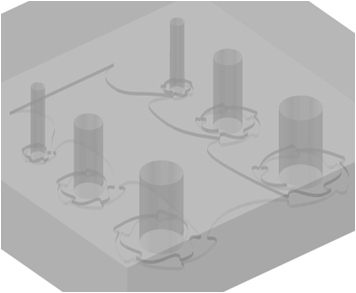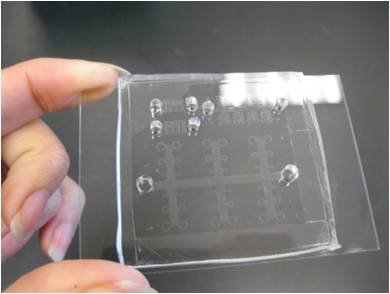Microfluidic Trap Array for Discovery & Observation of Microbial Eukaryotes
 |
 |
|
| AutoCAD design of first-generation trap concept with spiraling heart structures for cell concentration. | Microfluidic sampler with 3x (bottom), 2x (upper right) and two 1x (upper left) scaled samplers of the design at right. | Video of Cyclidium sp. protozoa swarming in a terminal heart (one protozoa ~ 10 microns). |
Recently published article: Bouchillon, Grant M., et al. "Microfluidic passive samplers for in situ collection of live aquatic protists." Analytical Methods 6.20 (2014): 8350-8357.
Biogeography of protozoa is poorly understood, yet protozoa play vital roles in global carbon cycling and mobilization of pollutants to higher trophic levels. We are developing novel microfluidic samplers to link form, function, and taxonomy of protozoa communities. Traps are designed to selectively trap protozoa based on cell size and plasticity, motility mode, and attraction to light or nutrients.
 Other short videos taken from
inside the microfluidic traps from our environmental deployments
Other short videos taken from
inside the microfluidic traps from our environmental deploymentsLarge Ciliated Protozoa [Hi-Res]
Multiple Protozoa in a Heart Trap [Hi-Res]
Competing Ciliates Square Trap [Hi-Res]
People Involved: Grant Bouchillon, Leia Dwyer, Erika Orner
Funding: NSF 1027125